The Broken Wheel
Johnny Gotcha
Johnny Gotcha
Unbroken: A World War II Story
TINTIN THE BROKEN EAR

Updated from its previous format to include the later 3.2 Litre models through 1989. This Floyd Clymer publication includes complete technical data, service and maintenance information and comprehensive detailed instructions for the repair and overhaul of all major and minor mechanical and electrical components for the 1973 to 1989 Porsche 911G Series, 2.7, 3.0 and the 3.2 Litre models.
In its original format, this manual covered the Porsche 911 models through the 1978 model year. However, additional information for the earlier 2.7 and 3.0 Litre models that was not available at the time the original manual was published, is now included or appended to each chapter in this revised publication.
While this manual focuses on the 1973-1989 G series 911, much of the information is also applicable to the earlier 2.4 Litre (1971-73) models destined for the U.S.A., Australia, Japan and Canada that, due to emission requirements, were fitted with Bosch mechanical fuel injection (FIP). Consequently, this manual will also be of interest to owners of those 2.4 litre fuel injected models.
The manual is broken down into the following sections: Engine, Fuel System including Bosch mechanical fuel injection (FIP) continuous injection (CIS) and digital fuel injection (DME). Ignition Systems including Capacitive Discharge CDS, CDI and DME, Cooling, Heating & Exhaust Emission Systems, Clutch, Manual Transmission & Sportomatic Transmission, Rear Suspension & Drive Axles, Front Suspension, Steering, Brakes, Electrical System and Body. There is also an appendix to the rear of the manual that includes Technical Specifications and Wiring Diagrams.
While reprints of the factory manual are readily available, they are relatively expensive and we are pleased to be able to offer this reasonably priced alternative as a service to all 1973-1989 Porsche 911 enthusiasts worldwide.
248 pages, 311 illustrations plus an additional 66 pages of wiring diagrams, size 8.25 x 10.75 inches

Revised and updated to a larger format than the original, this Floyd Clymer publication includes complete technical data, service and maintenance information and comprehensive detailed instructions for the repair and overhaul of all major and minor mechanical and electrical components for the 1964 to 1973 Porsche 911 series of automobiles including the 2.0 Litre (1964-69), the 2.2 Litre (1969-71) and the 2.4 Litre (1971-73).
This manual is broken down into the following sections: Engine, Carburetters & Fuel System (including Fuel Injection), Ignition System (including Capacitive Discharge CDS system), Cooling, Heating & Exhaust Emission Systems, Clutch, Manual Transmission & Sportomatic Transmission, Rear Suspension & Drive Axles, Front Suspension, Steering, Brakes, Electrical System (including Wiring Diagrams) and Body (including Paint Codes & Door Hardware parts interchange). There is also a chapter that includes Torque Settings, comprehensive Technical Specifications and Lubrication information.
Profusely illustrated with more than 300 illustrations and charts, there is adequate detailed text and diagrams to assist in major refurbishing such as an engine rebuild or even a complete mechanical renovation making it an invaluable resource for collectors and restorers of these iconic automobiles.
206 pages, 300 plus illustrations, size 8.25 x 10.75 inches.

Land Rover Series I Restoration Manual has been written with the home restorer in mind and with the aim of providing knowledge, confidence and the technical details required for a full restoration. The book follows a 1957 Series I 109in, but also discusses how the other Series I models differ. Each task is broken down into step-by-step instructions with accompanying photographs, from minor repair and maintenance procedures to a thorough inspection and refurbishment of the engine’s core components. There are additional tips on how to keep restoration costs under control and what it takes to make a concourse winner stand out from the pack. Superbly illustrated with over 830 colour photographs.

Celebrate 75 years of Ferrari with this complete, fascinating, and stunningly illustrated history highlighting the company’s legendary sports cars and their worldwide influence.
A stellar combination of beauty, engineering, racing success, exclusivity, and Italian flair combine to make Ferrari the world’s most legendary carmaker. All these traits coalesce in the form of Ferrari’s road cars. No other sports car manufacturer has so consistently set the bar for style and performance. It’s a near unbroken 75-year run of automotive hits:
Ferrari: 75 Years dives deep into Ferrari’s sports car history beginning in 1947, but also examines Enzo Ferrari’s early career with Alfa-Romeo before he launched his legendary company.
Automotive historian and photographer Dennis Adler offers Ferrari owners and fans a full and fascinating picture of Maranello’s 75 years of sports car manufacturing. Adler’s detailed text is accompanied by his breathtaking photography and supplemented by important historic images.
For 75 years, Ferrari has created high-performance automotive works of art to fire the imaginations of car lovers and performance enthusiasts the world over. Ferrari: 75 Years provides an inspiring and illuminating look back at this history.
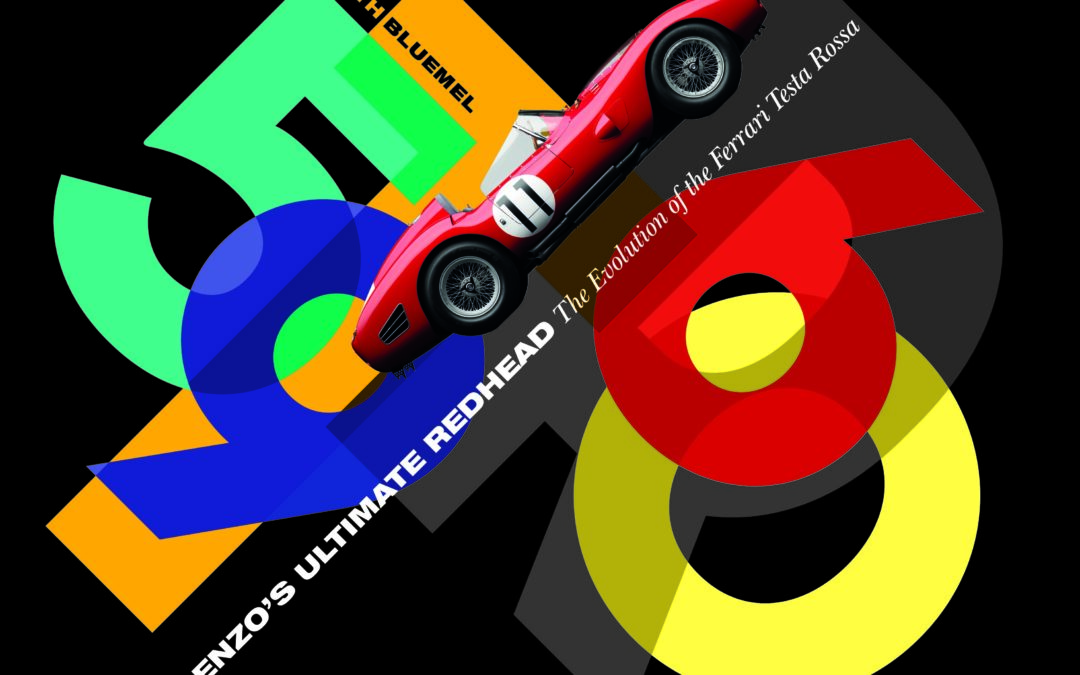
This book is about the Ferrari 250 TR 59/60, the ultimate expression of the legendary 250 Testa Rossa. Written by revered Ferrari authority Keith Bluemel, it covers the development of the ‘TR’ from inception through to the 1959/1960 seasons, culminating with the Le Mans victory of 1960. It slowly focuses on chassis number 0774, the actual car that scored that win in the 24 hour marathon in the hands of Paul Frère and Olivier Gendebien.
The title contains some terrific photos within the 204 pages all excellently reproduced on the highest quality paper stock. Its broken down into 8 chapters describing the model’s evolution – the ’59 and ’60 seasons in particular are covered in great detail. There are sidebars on the drivers who piloted 0774 and the circuits it competed on along with in-depth studies of the car’s main opposition. The final chapter is about 0774’s life after Le Mans and its time in private hands, rounding off with a salon of Michael Furman studio shots and various appendices. A high quality production with slipcase, designed by Julian Balme.
Limited Edition of 1000 copies

This is the story of Stephen South, a young British racing driver in the Seventies who seemed set for the glory that ultimately fell instead to rival Nigel Mansell.
Where one went on to become one of the nation’s most loved characters and the World Champion in 1992, the other’s career faded to a footnote in the cruellest circumstances.
This is a multi-faceted tale of struggle, success, disappointment, controversy, the continuous battle for funding and recognition and, ultimately, heartbreak.
Famously reticent even from his early schoolboy days as a British karting champion, South now talks openly about his career with first-time author Darren Banks. Many leading figures from the world of motor racing are woven into the narrative, which traces the turbulent era of the Seventies, the trials and tribulations which only strengthened South’s quiet yet indomitable resolve, and how close he got to his dream of racing in F1 after a winter of hugely promising test work with Colin Chapman’s Lotus team in 1979.
And for the first time he discusses with chilling candour the events that saw him forced to race in the North American Can-Am sportscar series instead of F1 in 1980, the horrific accident that befell him at Trois-Rivieres in Canada, his physically and emotionally painful recovery in a hospital on the other side of the world, his eventual return home and the subsequent trauma of having to deal with a career now broken and a life permanently altered.
Those key figures recall with affection – with a couple of exceptions – their experiences of working with or racing against this vastly underrated driver who, had he been dealt a better hand by fate, would surely be remembered alongside contemporaries such as Mansell and fellow World Champion Keke Rosberg as one of the leading F1 drivers of his era.
Profusely illustrated with numerous previously unseen photographs from professional archives and personal collections, THE WAY IT WAS – The story of a British racer who was too fast to be forgotten, is a gritty tale of the darker side of a sport when it fails to deliver a racer’s just deserts.

Lights Out, Full Throttle is the hilarious account of life in the F1 pit lane from two legends of the sport, Damon Hill and Johnny Herbert. Damon and Johnny here. Motorsport’s answer to Ant and Dec, just a lot more comprehensible and, all in all, a wee bit taller. Between us we have about 100 years’ experience of driving cars quickly and have competed in 261 Grand Prix spawning 25 wins, 49 podiums, one World Championship and 458 championship points. We even have a win at Le Mans to our names, as well as two smashed ankles, a broken arm, a broken wrist, a broken leg, about sixty broken ribs, a pierced upper thigh that missed Johnny’s twig and berries by millimetres, and a bruised ego or three.Basically, we’re two middle-aged men who are both what you might call physically compromised. That said, contrary to popular belief, we still have a modicum of bladder control and can talk Formula 1 with the best of them. Which brings us to our book. Despite its immense popularity, when it comes to things like humour and absurdity, Formula 1 is not exactly a ride on the big dipper and in that respect it hasn’t buttered our parsnips for decades. Well, nil desperandum boys and girls because we, Damon Graham Devereux Hill, OBE, and John Paul Herbert, No BE, are here to put the F back into Formula 1 by ditching aerodynamics, clean air and tyre degradation in favour of honest, forthright opinions and apocryphal stories involving automotive derring-do. And, derring-don’t!
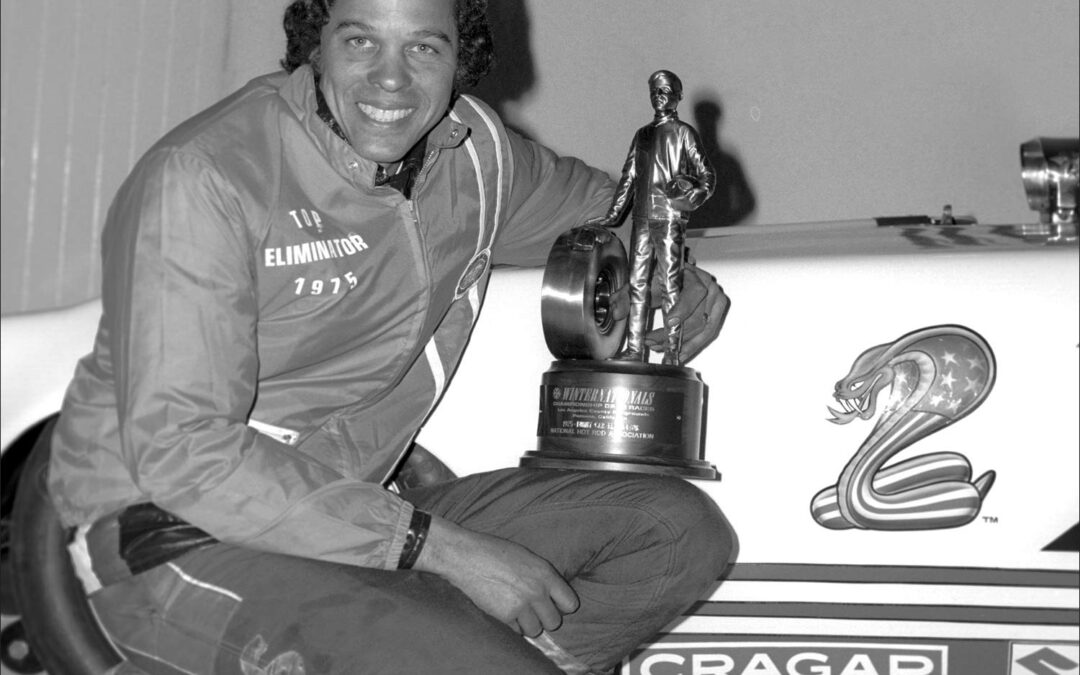
Don “The Snake” Prudhomme reveals for the first time ever his incredible life and career on and off of the drag strip.
Imagine spending a year with Don “The Snake” Prudhomme, having coffee together and talking about his life, his racing, his friends, and his family. He’d tell you about how he rose from being a high school drop-out who was painting cars to a respected Top Fuel dragster driver and successful businessman. You’d hear how he toured the country with Tommy Ivo and “The Hawaiian” Roland Leong, racing all the legends from “Big Daddy” Don Garlits to “The Golden Greek” [Chris] Karamesines.
He’d say how he met Tom McEwen and recall how they became the Snake and the Mongoose, leading to a career in Funny Cars that netted him four championships in a row. He’d talk about the thrill of first wins and owning his own teams but also the struggles of bad seasons, crashes and fires, broken parts, and broken contracts. Along the way, he’d speak about the people in his life, such as engine-builder Keith Black and NHRA president Wally Parks, and those who were killed in the wild and unpredictable sport of nitro racing.
It wouldn’t be only racing, though. Prudhomme would share lessons he learned about business and life from such varied sources as a neighbor in Granada Hills to Ford GT40 driver Dan Gurney. He also would talk about the importance of family: how his wife, Lynn, and daughter, Donna, changed his world and how finding out about his African-American roots opened his eyes to a culture and inheritance he’d always wanted.
This is the experience you’ll get in Don “The Snake” Prudhomme: My Life Beyond the 1320.

202 pages, 123 illustrations, size 8.25 x 10.75 inches. This Floyd Clymer publication includes complete technical data, service and maintenance information and comprehensive detailed instructions for the repair and overhaul of all major and minor mechanical and electrical components for both the 3.8 & 4.2 XK-E & E-Type Series 1 & 2. The manual is broken down into the following sections: Engine, Fuel System, Cooling System, Clutch, Manual Transmission, Automatic Transmission (2+2 Models), Rear Axle, Steering, Front Suspension, Rear Suspension, Brakes, Electrical System, Heating & Windscreen Wipers, Body, Wheels & Tires and Lubrication & Maintenance. In addition, there is also an easy to follow fault diagnosis at the end of each section. There are 123 illustrations and adequate detailed text and diagrams to assist in major refurbishing such as an engine rebuild or even a complete mechanical renovation making it an invaluable resource for collectors and restorers of these iconic automobiles.
While reprints of the factory manual are readily available they are relatively expensive and we are pleased to be able to offer this reasonably priced alternative as a service to all Jaguar XK-E and E-Type enthusiasts worldwide.
This is a ‘must have’ reference for any XK-E or E-Type Jaguar enthusiast and would certainly assist in helping any potential purchaser better understand the inner workings prior purchasing of one of these classic automobiles.

Jack Warner was the son of an Alaskan bush plane pilot. He shot out his TV when he was ten. Uncle Kenny taught him to make Old Fashioneds in the 5th grade.Jack learned to fly at twelve, braving storms, crash landings and wild animals to save lives. After crashing on a snowy glacier, he rebuilt the broken landing gear with bailing wire and duct tape.As an Air Force fighter pilot, he witnessed U.S. pilots being shot down over North Vietnam out of reach of our rescue helicopters. After scamming general’s jeeps and golf carts to get suspension parts, he built a bush plane. He rescued a downed pilot but the second one was killed. Urged to continue by a U.S. soldier who escaped from a Vietcong prison camp, he kept going. After rescuing 21 pilots, he earned the moniker, “Black Jack” Warner. After retiring from the Air Force, he headed for the good ‘ol USA. On the way home, a high stakes poker game in Hawaii changed his life. As a new private pilot, he flew celebrities, delivered priceless jewels and one of a kind collector cars. Jack piloted a TV news airplane but ended up crashing into the station’s helicopter.Warner bought “mothballed” planes and brought them back to life to start an air cargo business. Jack’s staff of “moles” went dumpster diving to get valuable intel info on competitors. Guerilla tactics like these helped him become the largest cargo carrier in the world.Jack once volunteered to fly a water dropping airplane, saving the lives of eight firefighters. But, he was the most proud of rescuing five Americans from Iraq, right under Saddam Hussein’s nose.His career of a never ending trampoline of ups and downs kept his life anything but boring.
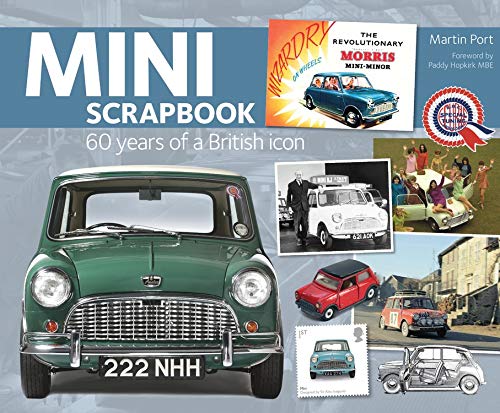
Launched in 1959, the Mini helped to change automotive design, with its unique combination of aesthetics, space efficiency, engineering approach, and handling. Alec Issigonis’s masterpiece was an instant hit – not just with the buying public, but with celebrities and racers alike, from Sir Stirling Moss to ‘The Fab Four’. The Mini became a much-loved staple of the British car industry – a position that it has arguably enjoyed for 60 years and continues today.
In this latest addition to the Scrapbook series from Porter Press International, the story of this unique little car is broken up into accessible nuggets and aided by a collection of archive and contemporary photography, to illustrate just what makes the Mini so special in this, its 60th year.
Author Martin Port set the scene with a look at why this charismatic little car is so loved around the world. He reveals how the concept became a reality and covers each main incarnation of the classic Mini, from 1959 to 2000. From celebrity owners to appearances on the silver screen, competition wins and all sorts of weird and wonderful Mini variants – this is the ultimate visual guide to an icon of British design.

The 2018 FIM Superbike World Championship will go down in history as the season Jonathan Rea became the new, undisputed King of WorldSBK.
A fourth consecutive World Championship title saw Rea reach seventy-one career wins, surpassing the longstanding record set by Carl Fogarty. Standing on the podium twenty-two times in 2018, the quadruple champ was unstoppable, starting the season steadily before building an unassailable 545 points advantage by the time the final chequered flag was waived.
Records were also broken in qualifying. Tom Sykes, also Kawasaki mounted, became the most successful rider in Tissot-Superpole, ending the season with forty-eight career Pole Positions.
The highs and lows from all thirteen rounds are relived like never before in this official season review. Full analysis of WorldSSP, WorldSSP300 and STK1000 are also included, as is a look at each of the manufacturers that took part in all four championship classes. Exclusive photos, as well as dedicated sections that look back at the history of WorldSBK, the tyres, and the Champions, make the 2018 World Superbike Official Yearbook one for your collection!
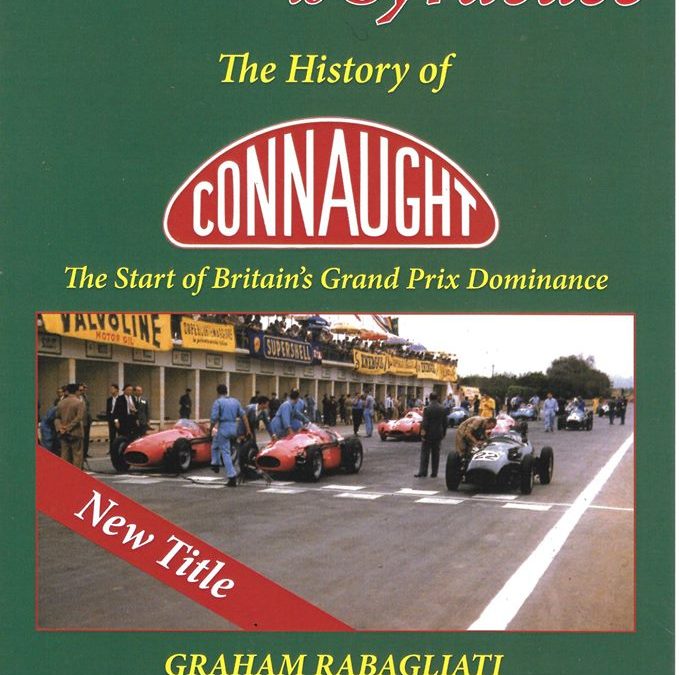
In the mid-1950s racing still took place in time-honoured fashion, when two vintage 1938 converted buses were used to transport the Connaught Grand Prix cars 2,000 miles from Send to Syracuse, and a team of just eight watched Tony Brooks cover 70 laps in the Connaught ‘B’ Type before taking a well-deserved victory against stiff opposition, the first such win for a British car and driver since 1924.
At Syracuse in 1955, Tony Brooks, driving a works Connaught , won a major Continental Formula One Grand Prix for the first time since Sir Henry Segrave won the San Sebastian Grand prix for Sunbeam in 1924, ,defeating the works team of five Maseratis on their home ground, and from that moment on , the face of Formula One was changed, leading to the great domination in the years ahead of the British teams and the British motor racing industry
You have only to read both Jenks’ contemporary reports of the Mille Miglia , and then of the Syracuse GP, to understand how he appreciated the magnitude and significance of Tony Brooks’ achievement. Not only did a young dental student leap out of the unknown into history, but the long trip down to Syracuse for the Connaught mechanics in their ancient bus cum transporter , was a “ Boys’ Own” story in itself
With the psychological barrier broken, just as in athletics , when Roger Bannister broke the 4 minute mile, the other British marques, Vanwall, BRM, Cooper and Lotus thereafter took a quantum leap forward, and from 1955 onwards, Britain all but never looked back.

In March of 1923, ground was broken for the Ford Engineering Laboratory building. The building was designed by Henry Ford and local architect Albert Kahn and would be one of the largest design and engineering centers of its time. Within this new book written by Beth Ann Dalrymple, Analytical Engineer for Ford Motor Company, lies the incredible 90-year history, and legacy of the Ford Engineering Laboratory and its inhabitants told through a photographer’s lens. Each turn of a page delves deeper into the progress, and people driven world of Ford automobile design & engineering. All the individuals’ current and past who have worked within these walls continue to pave the way for mankind to go further.
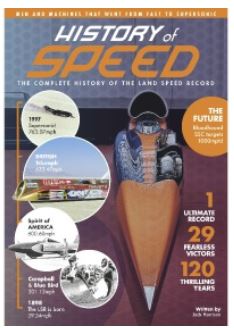
BOOKAZINE
In October 1997, British Royal Air Force pilot Andy Green, in a supersonic car, capped what had been a century-long assault on the land speed record to set a mark of 763.07mph at Black Rock Desert in Nevada. In doing so he became the first driver to go faster than the speed of sound, and reached a target that no man or car has been able to surpass since.
The 20 years that have passed since that day represent the longest time in the history of the fabled record that it’s remained unbroken. After Frenchman Gaston de Chasseloup-Laubat became the first driver declared as the fastest on Earth in 1898 with a speed of 39.24mph, Sir Malcolm Campbell, Sir Henry Segrave, George Eyston, Donald Campbell, Craig Breedlove and Richard Noble were just some of the now-legendary figures who continually raised the bar in the pursuit of speed supremacy. Fuelled by the seismic technological advancement and engineering excellence that dominated the 20th century, this relentless band of fearless individuals became obsessed with going faster, faster and faster still.
This 132-page special volume tells the story of the men whose names will be forever etched in the annals of history as land speed record holders, and uses a wealth of rare images to uncover how they each achieved immortality. The edition also examines the ground-breaking vehicles which proved capable of reaching speeds previously deemed to be unachievable, and goes on to explore the likelihood of the 21st century producing the first 1000mph car.

The First Three Shelby Cobras, the third book in the acclaimed Exceptional Cars series, tells the story of three remarkable cars, the first AC Cobras created by the legendary Carroll Shelby in 1962 and now favorites of sports-car enthusiasts throughout the world.
The prototype CSX2000 has been described as the “most important American car”, although it was built on a British AC Ace chassis with an American Ford V8 engine. It was retained by the Shelby family until 2016, when it sold at auction for a record $13.75 million.
CSX2001 was the first production Cobra, and was delivered to American racing driver Ed Hugus. It was later sold to Frenchman Jean-Marie Vincent, who raced in the Tour de France and in numerous European hillclimbs.
CSX2002 was the first Cobra to race and nearly won its inaugural outing at Riverside, driven by Bill Krause, until sidelined by a broken rear hub. It did take the first ever Cobra win, with Dave MacDonald at Tucson in March 1963.
Its success led to a series of competition wins that made Shelby’s Cobras famous and admired across the globe. All three cars are now the pride of car collections in the United States of America.
CSX2000 and CSX2002 are part of the Larry Miller Collection, and CSX2001 belongs to California-based motorsport aficionado Bruce Meyer.
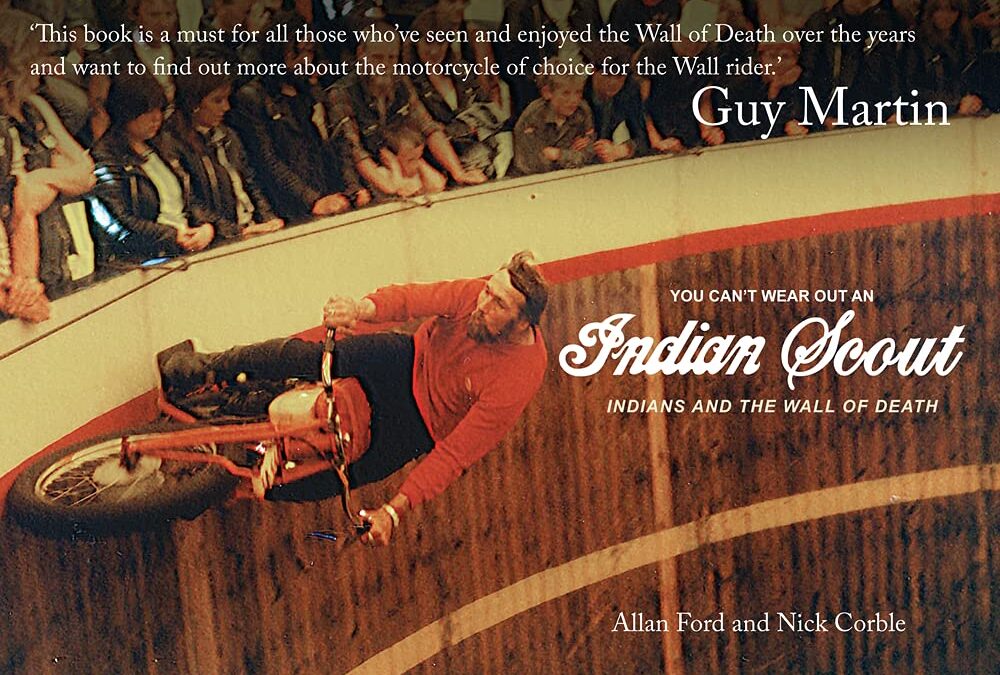
The Indian Scout motorcycle is the favoured mount for Wall of Death riders all over the world. Drawing upon modern and archive material, Wall of Death owner and rider Allan Ford and author Nick Corble explore the reasons behind this relationship and bring the story of the Wall up to date, including behind the scene details of the latest Wall of Death speed record achieved by Guy Martin. It’s a story that spans more than a century, starting with experiments with motorised bicycles in the 1890s, passing through two world wars and ending by looking to a future where Indians continue to be restored and ridden on the Wall. As this book makes clear, the relationship between Indians and the Wall of Death is one that will never be broken. As Sammy Pierce, at one time the world’s largest Indian motorcycle dealer once put it:You can’t wear out an Indian Scout,Or its brother the Indian Chief.They’re built like rocks to stand hard knocks,It’s the Harleys that cause the grief.